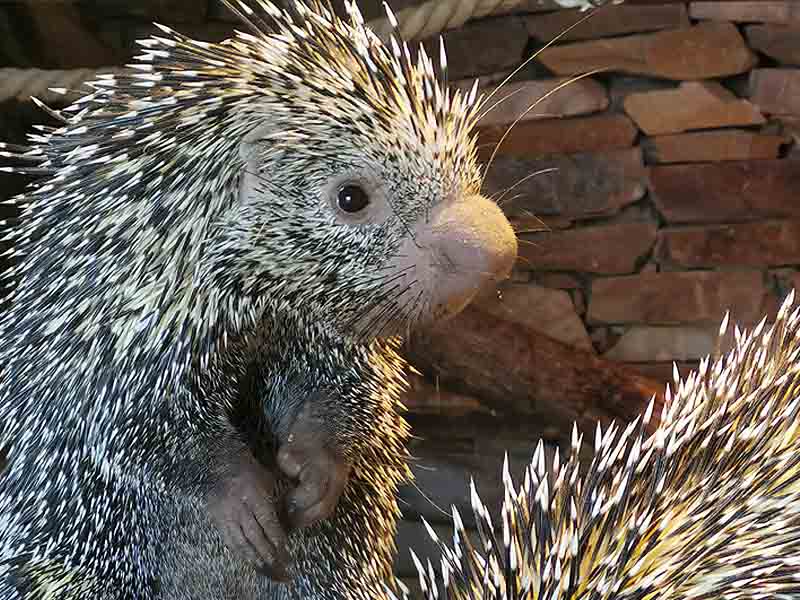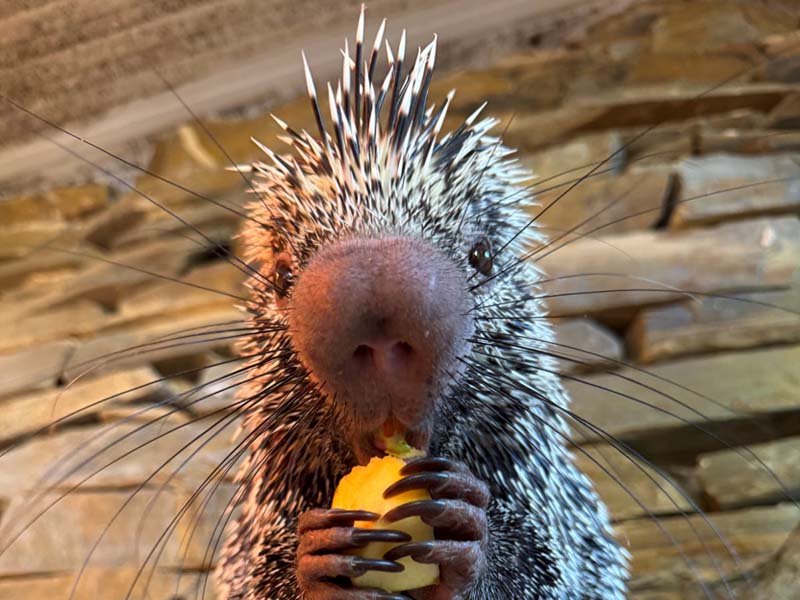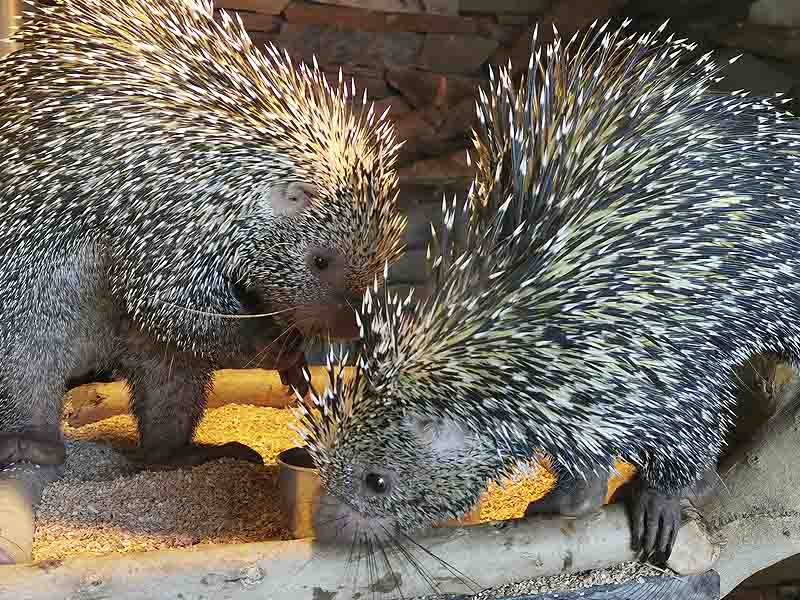The Brazilian tree porcupine (Coendou prehensilis) is one of the ten species of porcupines that inhabit the American continent, distributed in the rainforests and forests of northern South America, as far north as Argentina and Uruguay.
It is characterised by its numerous spines, strong and close together, with bands of white and pale yellow at their base and tips, and black or dark brown in the centre. While the spines on its head, legs and tail are short, those on its back are thick and long. In addition, it has long vibrissae that serve as a sensory element, reaching down to the shoulders. These stiff, whisker-like hairs, present in many animals, are used to sense vibrations caused by changes in the air or to detect obstacles in the dark. Although it is not aggressive and its spines serve as a defence against predators, it defends itself firmly against attack or disturbance.
Its long, strong, prehensile tail, ready to cling to branches, has no spines and is covered with scales, and can be almost as long as its body. Its legs are cushioned and have four strong, curved claws, which are also used to cling to trees.
It chooses to live in dense forests with vines, and practically never climbs down from the branches of trees, unless it has to cross from one to another by descending to ground level, as it is not prepared for jumping. Thus, it carries out most of its daily activity in the middle and upper areas, where it finds its food, either accompanied by its mate or alone. It has nocturnal habits, sleeping during the day in hollows in tree trunks.

















